ABA Therapy for Autism Behavioral Health Programs
Unlocking Potential: Understanding ABA Therapy in Autism Care
Introduction to ABA Therapy
Applied Behavior Analysis (ABA) therapy stands out as a cornerstone in autism behavioral health programs, distinguished for its scientific, evidence-based approach to improving life skills and reducing problematic behaviors in individuals with autism spectrum disorder (ASD). With its roots in the 1960s, ABA has evolved significantly, embracing modern methodologies that prioritize positive reinforcement and personalized treatment plans, making it a preferred choice for families seeking effective interventions for autism.
Understanding ABA Therapy and Its Application in Autism
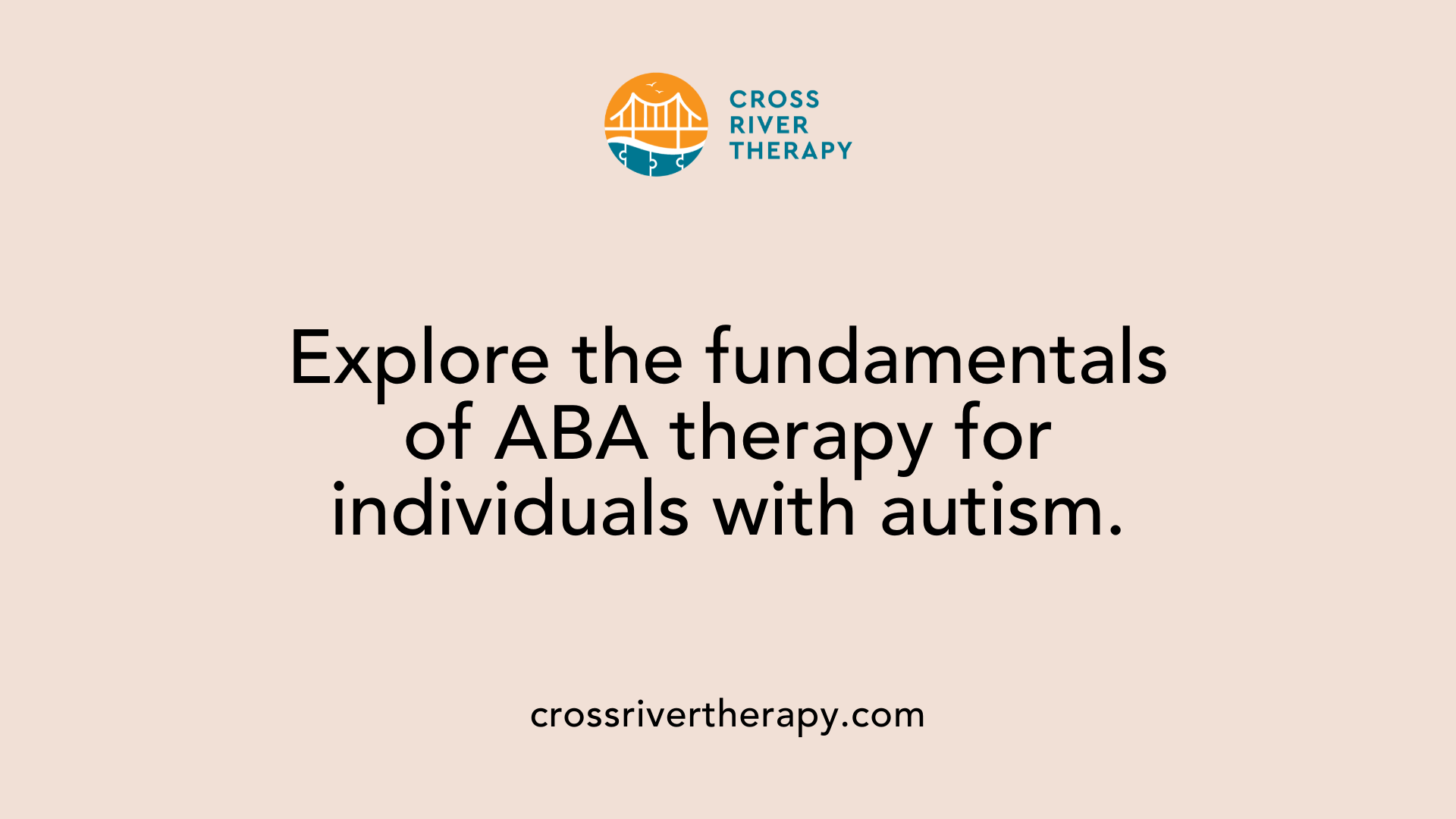
What is Applied Behavior Analysis (ABA) therapy and how is it used for autism?
Applied Behavior Analysis (ABA) therapy is a scientific method that aims to modify behavior through structured techniques. Primarily designed for individuals with autism and related developmental disorders, ABA focuses on reinforcing positive behaviors such as communication and social interaction while aiming to diminish harmful behaviors.
Key components of ABA include:
- Positive Reinforcement: Desired behaviors are rewarded, encouraging repetition.
- Task Segmentation: Larger tasks are broken down into smaller, manageable steps.
- A-B-C Model: This framework assesses behavior through its antecedents (triggers), the behavior itself, and the consequences that follow.
Application in autism treatment
ABA therapy is versatile and can be adapted to the unique needs of each individual. It is typically delivered in various settings such as the home, school, or community. Programs are individualized, beginning with assessments from Board Certified Behavior Analysts (BCBAs) who design treatment plans based on each child's specific skills and challenges.
A variety of methodologies under the ABA umbrella include:
- Discrete Trial Training (DTT): A structured approach utilizing step-by-step instructions.
- Pivotal Response Training (PRT): Focuses on improving pivotal areas of behavior in natural settings.
- Early Start Denver Model (ESDM): Emphasizes play-based learning for younger children.
Effectiveness and benefits
Research strongly supports the effectiveness of ABA therapy, particularly when implemented at an early age. Studies show that children receiving intensive ABA (25 to 40 hours per week) exhibit significant gains in:
- Language skills
- Social skills
- Daily living skills
- Academic performance
With endorsements from organizations like the U.S. Surgeon General and the American Psychological Association, ABA is acknowledged as an evidence-based best practice treatment. The adaptations of ABA also extend its use beyond autism to individuals with ADHD, OCD, and various behavioral challenges, reinforcing its significance in both educational and therapeutic contexts.
Beyond Autism: Expanding the Reach of ABA Therapy
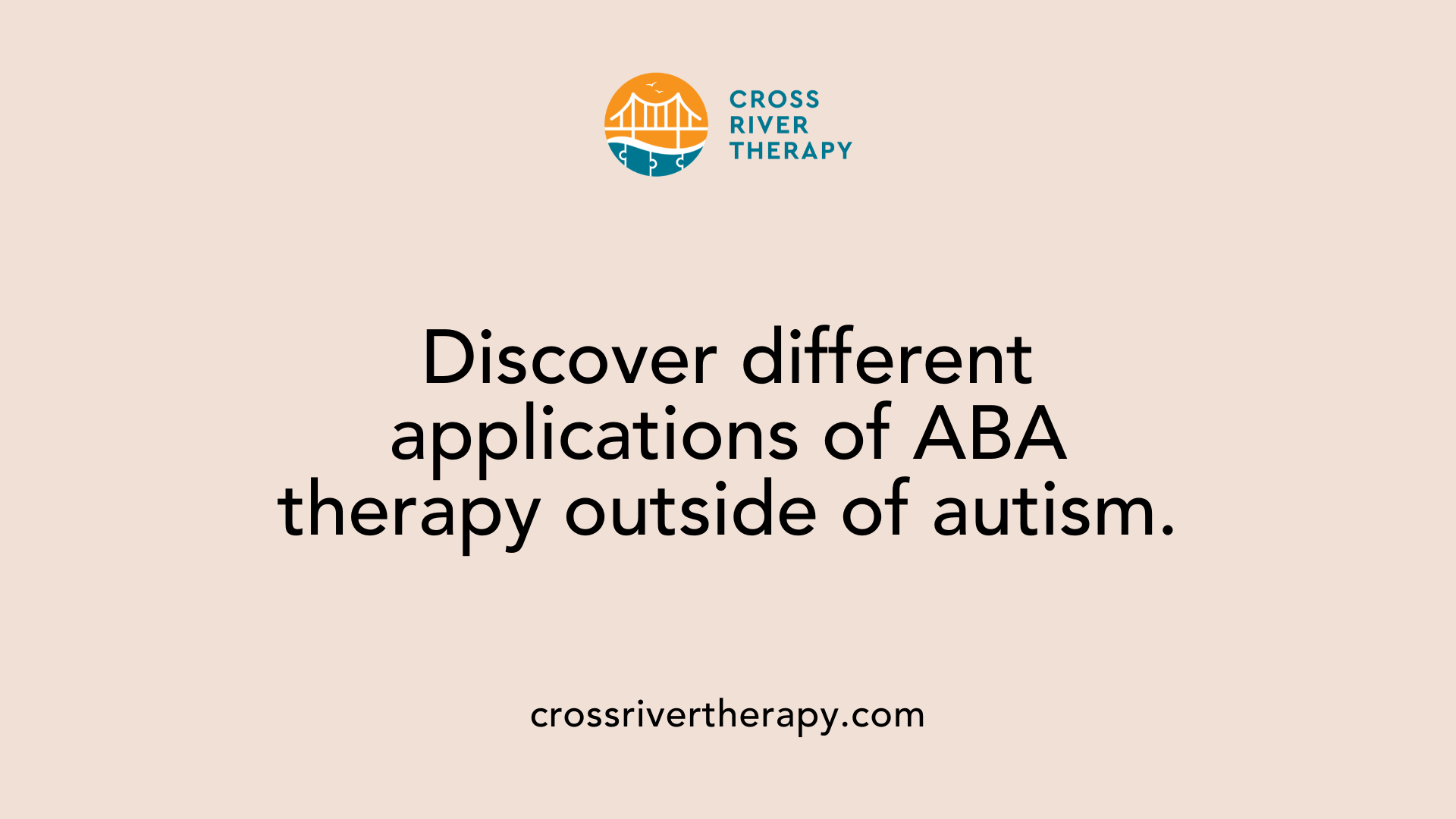
Is ABA therapy used exclusively for autism?
ABA therapy is not limited to autism; it effectively addresses various behavioral issues across diverse populations. While it is primarily recognized for its success with Autism Spectrum Disorder (ASD), ABA techniques are also beneficial for individuals dealing with Attention Deficit Hyperactivity Disorder (ADHD), Obsessive-Compulsive Disorder (OCD), Post-Traumatic Stress Disorder (PTSD), and various learning disabilities.
- Broader Applicability: Beyond autism, ABA finds uses in educational settings, helping children who struggle academically by improving focus and behavior. It can also be utilized in sports psychology, enhancing athletes' performance through motivation and behavior modification.
- Client Diversity: The adaptable nature of ABA allows it to cater to children, adolescents, adults, and seniors, making it a versatile tool for enhancing quality of life across the lifespan.
Versatility and adaptability of ABA techniques
The strengths of ABA lie in its ability to tailor interventions to individual needs. The process begins with comprehensive assessments conducted by Board Certified Behavior Analysts (BCBAs) who then create personalized treatment plans. This customization ensures that the techniques used resonate with each client’s specific challenges.
| ABA Technique | Application Areas | Focus |
|---|---|---|
| Discrete Trial Training (DTT) | Skill acquisition and behavior change | Step-by-step learning |
| Pivotal Response Training (PRT) | Natural settings for pivotal skills | Social engagement |
| Picture Exchange Communication System (PECS) | Communication for non-verbal individuals | Language development |
| Natural Language Acquisition (NLA) | Functional communication skills | Daily living skills |
The flexibility of ABA techniques allows for meaningful engagement, making learning enjoyable and effective, appealing to both clients and their families. As ABA expands beyond autism into various behavioral health contexts, its evidence-based strategies continue to demonstrate significant benefits.
Techniques and Methodologies in ABA Therapy
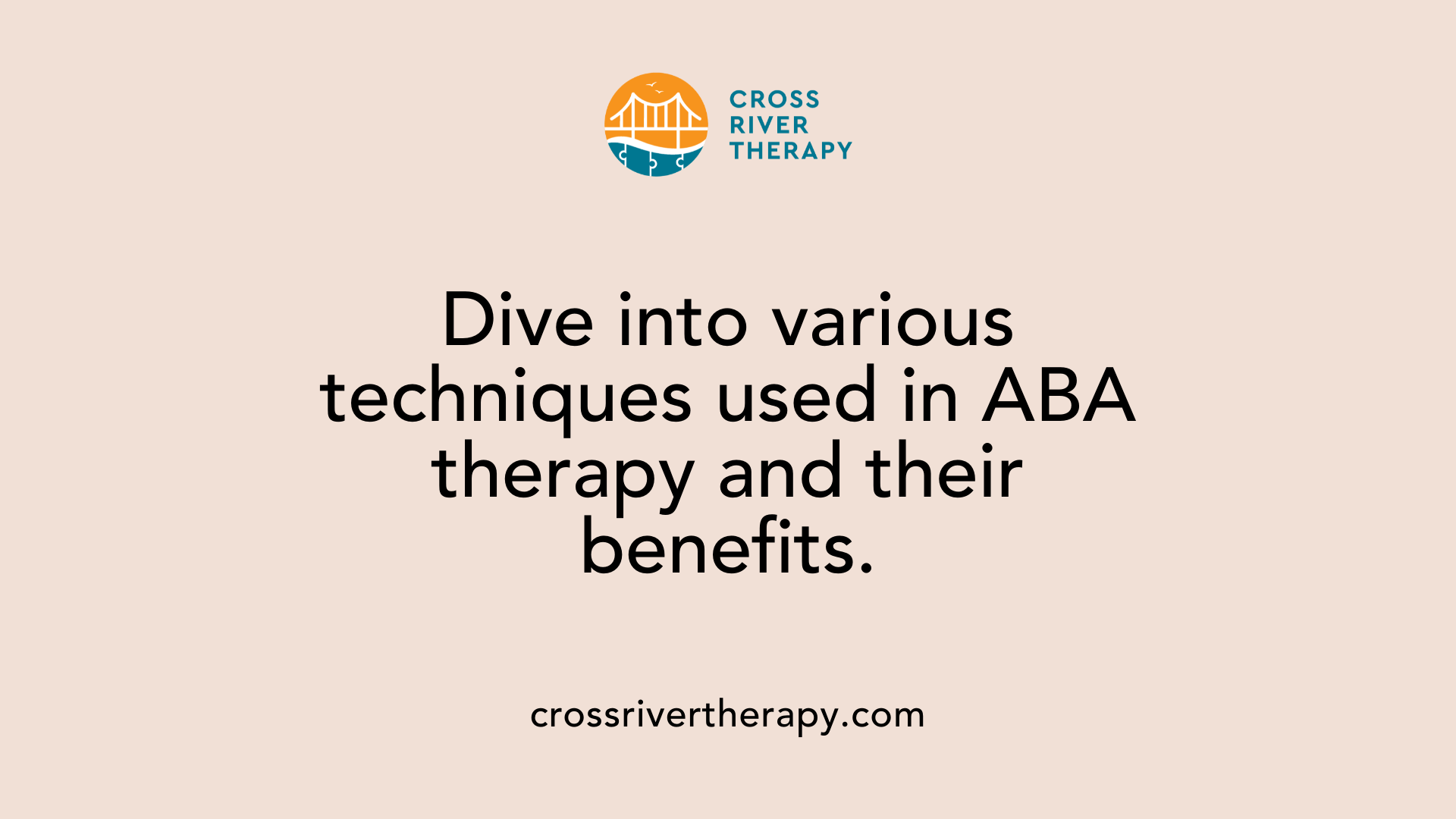
What are some examples of ABA therapy techniques?
Applied Behavior Analysis (ABA) employs various techniques that enhance learning and behavior modification. One foundational approach is Discrete Trial Training (DTT). This method consists of structured one-on-one sessions where specific behaviors are taught using clear prompts, trials, and reinforcement.
Positive reinforcement is pivotal inABA practices, rewarding individuals to encourage the repetition of desired behaviors. This strategy not only helps reinforce learning but also makes the process enjoyable for participants.
Another useful tool is the Picture Exchange Communication System (PECS), which employs images to facilitate communication, making it especially beneficial for non-verbal children.
Task analysis is also frequently used in ABA, breaking complex tasks into smaller, manageable steps. This is critical for teaching vital life skills, such as grooming or cooking, ensuring that learners can build competence gradually.
Lastly, modeling is an effective technique where desired behaviors are demonstrated, allowing individuals to observe and imitate social and communication skills in a natural setting. These methodologies create a comprehensive and adaptable framework that responds to individual learning needs and improves overall life quality.
| Technique | Description | Targeted Skills |
|---|---|---|
| Discrete Trial Training (DTT) | Structured sessions focusing on specific behaviors | Communication, social skills |
| Positive Reinforcement | Rewarding desired behaviors to encourage repetition | Any learned behavior |
| Picture Exchange Communication (PECS) | Uses images to aid communication | Language, communication |
| Task Analysis | Breaks down tasks into manageable steps | Daily living skills |
| Modeling | Demonstrating behaviors to facilitate learning | Social skills, communication |
These techniques exemplify the adaptability and evidence-based nature of ABA therapy, catering to the unique needs of each individual.
Addressing Behavioral Issues with ABA Therapy
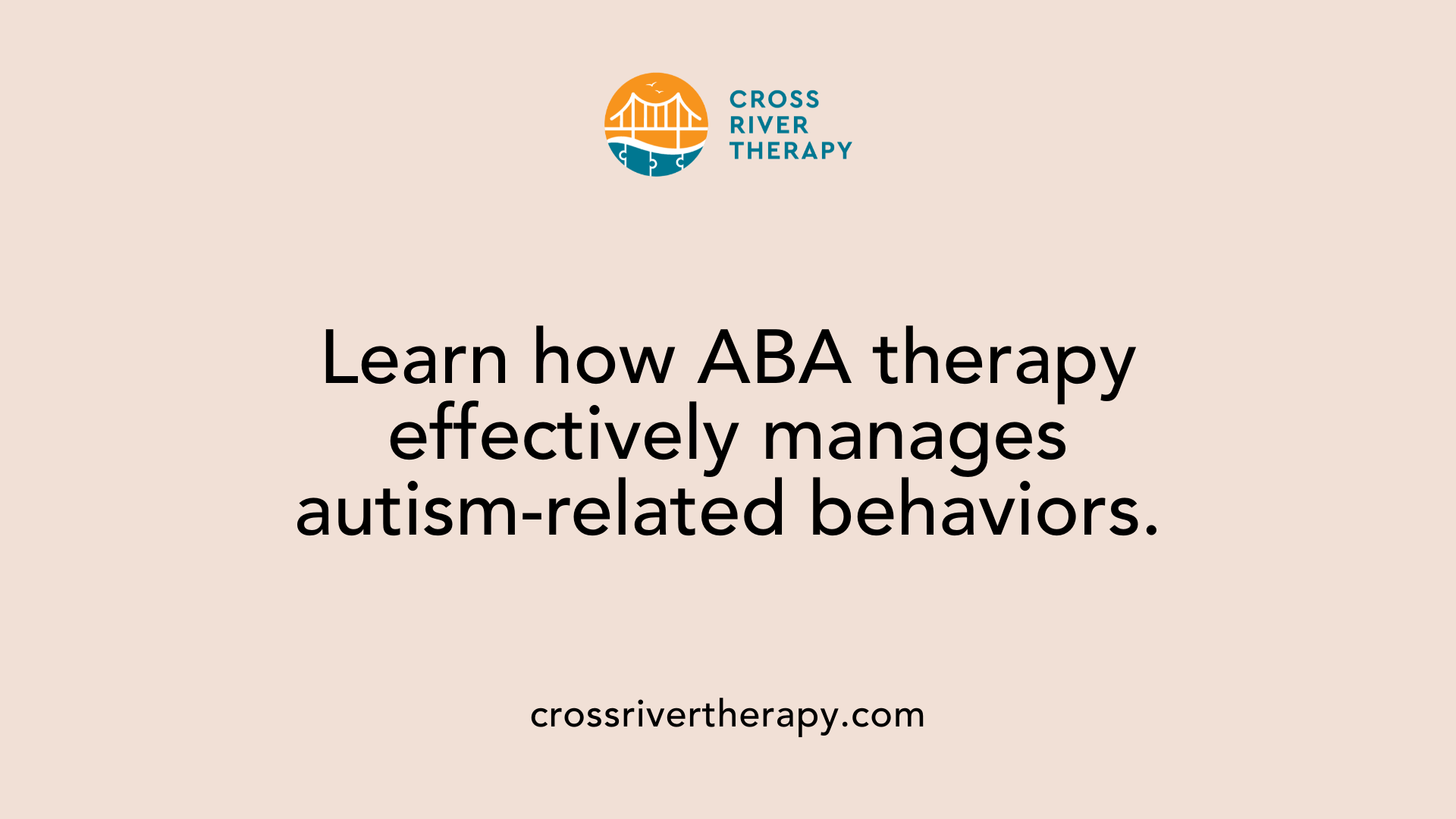
Role of ABA in Managing Autism-Related Behaviors
Applied Behavior Analysis (ABA) therapy is an effective, evidence-based intervention for addressing behavior problems related to autism. This therapy is designed to manage severe behaviors such as aggression, self-injury, and elopement by employing individualized strategies tailored to each child's unique needs.
One key component of ABA therapy is the Functional Behavior Assessment (FBA). The FBA helps identify the underlying reasons for challenging behaviors. With this information, therapists can deploy targeted interventions that teach appropriate communication skills, replacing challenging behaviors with more suitable alternatives.
Does ABA Therapy Help with Behavior Problems in Autism?
ABA therapy significantly enhances behavior management by reinforcing positive behaviors while equipping children with new essential skills. For instance, when a child learns to express their needs rather than resorting to self-injury, it leads to a noticeable reduction in problem behaviors.
Additionally, the involvement of parents is crucial; they often participate in data collection and track progress. This collaboration creates a comprehensive framework aimed at not just improving behavioral outcomes but also enhancing the child’s quality of life and fostering better participation in both learning and community activities.
By utilizing structured plans and evidence-based techniques, ABA therapy proves to be a robust approach for managing behavior issues in children with autism.
Understanding the Difference: Behavior Therapy vs. ABA
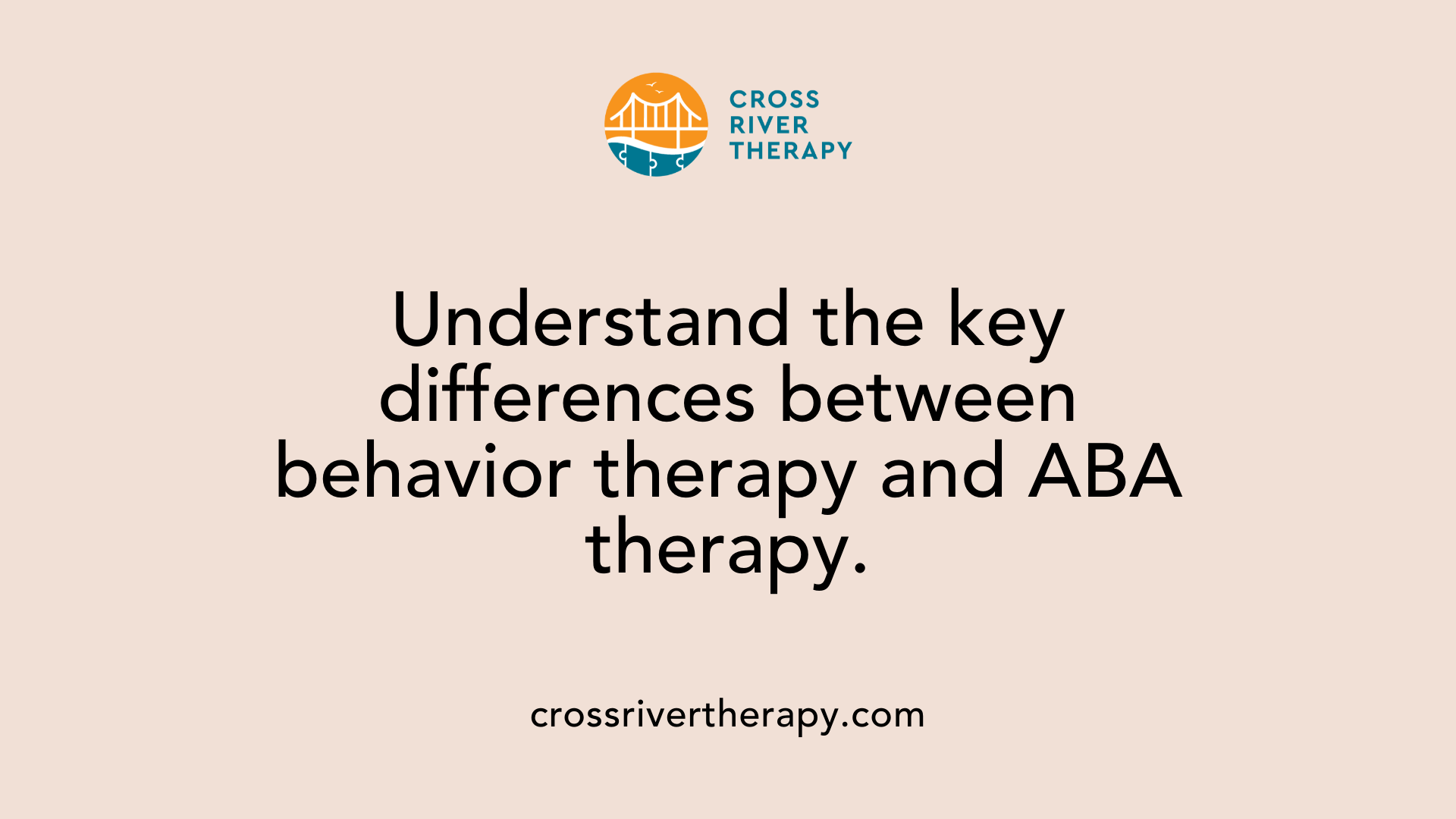
What is the difference between behavior therapy and ABA therapy?
Behavior therapy and ABA (Applied Behavior Analysis) therapy both focus on modifying behavior, but they differ significantly in their application and methodologies. ABA therapy is specifically designed to support individuals with autism. It employs principles of behavior analysis to develop targeted interventions that encourage positive behaviors and reduce negative ones.
In contrast, behavior therapy is a broader term encompassing various techniques for addressing a wide range of mental health issues, such as anxiety disorders, depression, and phobias. While all ABA therapists are trained in behavior analysis, not all behavior therapists employ ABA methods. Instead, they may utilize cognitive-behavioral approaches or other strategies tailored to their clients' needs.
Overall, the main distinction lies in ABA's specialized focus on autism and its structured, systematic approach to behavior modification, compared to the more general applications found in traditional behavior therapy.
Specialization and focus of ABA
ABA concentrates on teaching individuals skills necessary for enhancing their independence and quality of life. Its evidence-based methodologies are designed to meet the unique challenges faced by those on the autism spectrum. This specialized focus makes ABA an essential tool for practitioners working with these individuals.
Navigating ABA Therapy Access and Resources
Starting ABA Therapy
To begin accessing Applied Behavior Analysis (ABA) therapy, a child typically needs a formal diagnosis of autism spectrum disorder (ASD). This diagnosis is often obtained through assessments conducted by qualified professionals, such as a psychologist or psychiatrist. Following the diagnosis, a prescription or referral may be required to initiate services.
Once a child is eligible, the process starts with an evaluation by a Board Certified Behavior Analyst (BCBA). The BCBA conducts a comprehensive assessment to develop an individualized treatment plan tailored to fit the child's unique strengths and challenges. This plan outlines specific goals and the methodologies that will be used, which may include techniques like Discrete Trial Training (DTT) or Pivotal Response Training (PRT).
Insurance Coverage and Eligibility
Insurance coverage for ABA therapy can vary significantly depending on the specific plan. Many insurers provide coverage specifically for children diagnosed with autism, but the extent of coverage may differ. For instance, Medicaid recently added coverage for ABA therapy in Texas, although access might be limited due to a shortage of providers.
It’s essential for families to check with their insurance provider to understand what services are included under their plan. Some families may also explore parent-directed treatment options, where caregivers are trained to implement ABA strategies at home, often available at little to no cost.
The Future of ABA Therapy in Autism Care
ABA therapy continues to be a leading intervention in autism care, evolving to meet the diverse needs of individuals with ASD. As families and professionals seek the best treatments for autism, understanding the principles, methodologies, and potential of ABA therapy becomes essential. With a variety of techniques and a focus on evidence-based success, ABA therapy not only addresses the core challenges of autism but also enhances the overall quality of life for those it serves. As research progresses, ABA therapy remains a dynamic and adaptable tool for unlocking potential and fostering independence in individuals with autism.
References
- Applied Behavior Analysis (ABA) | Autism Speaks
- Applied Behavior Analysis (ABA) - Cleveland Clinic
- ABA Therapy for Autism Behavioral Health Programs
- Treatment and Intervention for Autism Spectrum Disorder - CDC
- The Controversy Around ABA - Child Mind Institute
- Developmental Pediatrics and Autism Behavioral Interventions
- Applied Behavior Analysis (ABA) for Children With Autism
- Behavioral Health Treatment | Children with Autism Spectrum Disorder
- Kind Behavioral Health ABA & Autism Services in North Carolina
- ABA Therapy for Autism Health Programs



